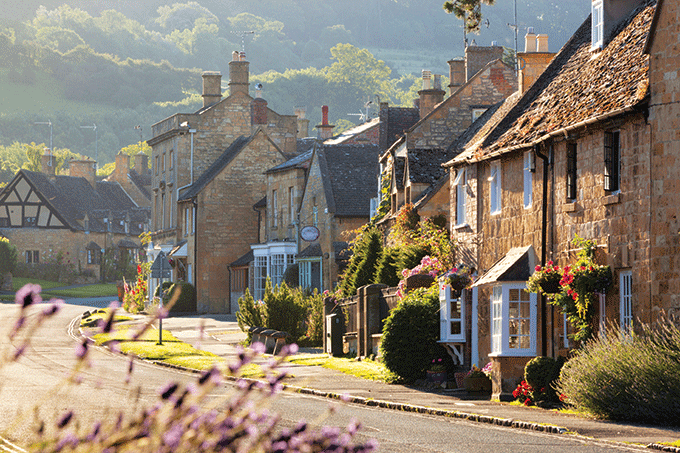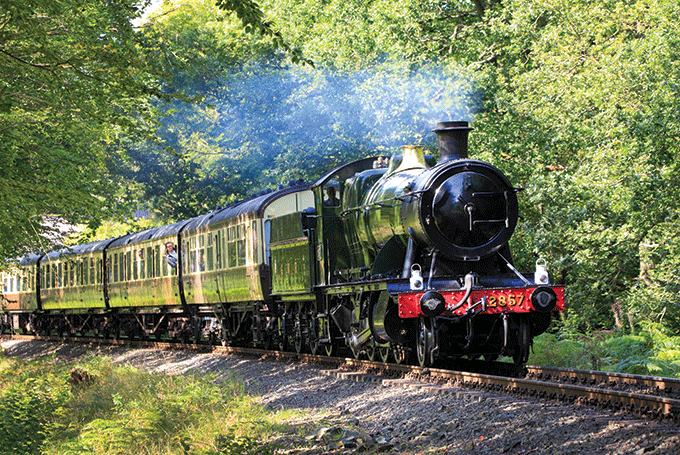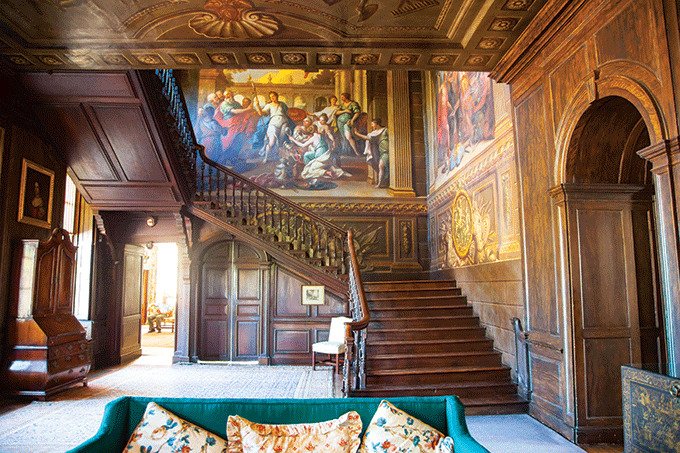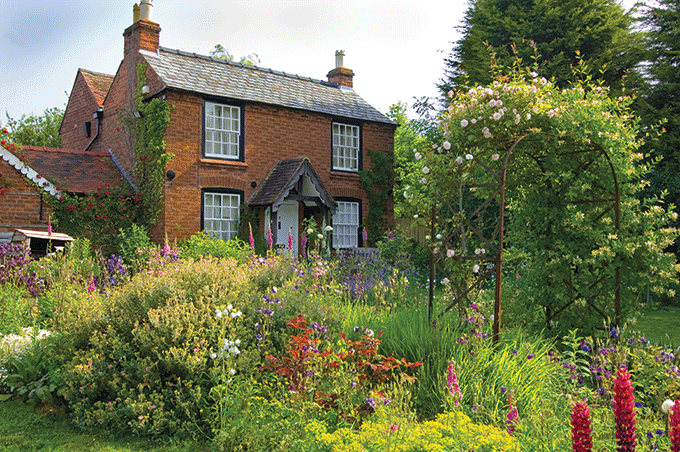From the Vale of Evesham to the Malvern Hills, discover more about the beautiful county that inspired one of Britain’s greatest composers, Sir Edward Elgar…

From the lowland expanses of the Vale of Evesham in the east, to the Malvern Hills in the west, Worcestershire is a splendid county which totals 672 sq miles and is the birthplace of many famous exports. It gave us Worcester Pearmain apples – the red, crunchy variety first bred by a Worcestershire nurseryman in 1873; Royal Worcester porcelain, founded in 1751; and Worcestershire Sauce, the recipe of which has remained a secret since it was first made in 1835.
It is a county teeming with history; its central city Worcester is the burial place of two saints (Wulfstan and Oswald), while the king who brought us Magna Carta (King John) is also buried here. It is a region that has witnessed ferocious battles yet retains much of its supreme ecclesiastical architecture. Coursed by two of Britain’s mightiest rivers – the Avon and Severn – and threaded by one of its finest canals, Worcestershire is a county noted for its mineral springs, music, literature and arts.
Nor is the region any stranger to conflict. During the English Civil War the city of Worcester earned the motto civitas in bello in pace fidelis, meaning ‘loyal city in war and peace’. It is noted for one of the war’s fiercest battles when, on 3 September 1651, more than 3,200 soldiers fell. Worcester also saw the first true battle of the Civil War on 23 September 1642 – the Battle of Powick Bridge; it lasted barely 20 minutes but around 50 lives were still lost.
Evesham, 12 miles southeast, had seen it all before. A town partly lassoed by a loop of the River Avon, it was here, on the morning of 4 August 1265 that Simon de Montfort made his last stand. Victorious at Lewes a year earlier, the taste of success was short-lived: with his escape route cut off by Prince Edward (later King Edward I), de Montfort and thousands of his troops were slain. According to the chronicler Robert of Gloucester it was mass murder, “… for battle it was none”. An obelisk, a mile north of the town, marks the battle’s location. Simon de Montfort and his son were buried in the church of Evesham’s abbey; founded in AD 701, it did not survive the Dissolution of the Monasteries (1536-1541). Little remains, save a fine Norman gateway and a 16th-century bell tower.
Leaving Evesham, the Avon meanders lazily north-west to Pershore. A pretty town, it too has an abbey, founded during the mid-7th century by tribal King Osric and his brother Oswald. Much of it survived the Dissolution and the remains are incorporated into the abbey church. The chancel with its magisterial arcades is 13th-century, while the south transept is Norman. Pershore is also famous for its plums – it even has an annual festival dedicated to the fruit. In its heyday, tons of plums were transported across the country by rail, leading the Great Western Railway to name a train the ‘Pershore Plum’.

Pershore also caught the attention of Sir John Betjeman in his poem Pershore Station, or a Liverish Journey First Class. He writes of a train waiting at the station on a chilly winter night: “Gas light on the platform, in my carriage electric light”; and of bells summoning townsfolk for evensong “… in the lighted abbey near”.
One of Worcestershire’s most breathtaking towns is Malvern, or more correctly, Great Malvern. The name ‘Malvern’ is derived from the Celtic term for ‘bare hill’ and residents are used to donning their hiking boots to navigate the town’s steep inclines. A most magnificent sight to behold is the Norman priory church of St Mary and St Michael, set against a backdrop of the Malvern Hills. The intricate architecture of the church is only upstaged by the treasures within. Fiery medieval stained glass and Britain’s largest collection of medieval tiles awaits those who venture inside.
Malvern hosts a yearly festival of drama, which was a firm favourite of George Bernard Shaw. The playwright was a familiar face in the town and many of his works have been performed here over the years. Great Malvern and neighbouring Malvern Wells were built on the health-giving properties of their mineral springs. Great Malvern became a spa resort during the early 19th century and taking the waters soon became de rigueur, with hotels and a water cure house soon developing to service the needs of the town’s visitors.
To some, the 99-step climb to reach the waters of St Ann’s Well will not be quite so ‘health-giving’. This ascent is hardly surprising as Great Malvern is a mere splash from Worcestershire Beacon which, at 425 metres (1,394ft), is the county’s highest point. Meanwhile, the pure waters of Holywell in Malvern Wells have been administered to the sick since 1622, although they are likely to have been popular as far back as medieval times. The present building dates from the 1840s and is where Schweppes started bottling Malvern Water in the mid-19th century.
Droitwich Spa, six miles northeast of Worcester, is another spa town. Its Roman name, ‘Salinae’, offers a clue to the properties of its waters, for Droitwich flourished on its salt springs. The Great Western Railway was quick to capitalise, claiming it was the “greatest natural brine baths for treatment of rheumatism, sciatica, arthritis etc.” A cluster of boarding establishments sprouted to serve those wishing to avail themselves of the baths’ benefits, including the Worcestershire Brine Baths Hotel, and St Andrews House, which, according to a 1923 advertisement, was the ‘only house with electric light.’

Droitwich was also the birthplace, in 1595, of Edward Winslow, one of the Pilgrim Fathers. He was the first person to be married in the colony of New England, and he also fathered the first English child to be born there. Hanbury Hall, east of the town, is a mansion in the William and Mary style, built in 1701. Wall paintings by Sir James Thornhill are among the highlights, which include the restored Hercules rooms and recreated Gothic corridor. Outside there are 20 acres of gardens that follow 18th-century designs – the recently and exquisitely restored parterre is star of the show.
The Worcester & Birmingham Canal, which opened in 1815, connects the two cities of its name and also separates Hanbury and Droitwich. Its 30 miles are heavily engineered with five tunnels and 58 locks. A remarkable 36 of these occur in less than three miles, commencing north of Hanbury and lifting vessels a total of 220ft.
Heading northeast from Droitwich the canal reaches Bromsgrove, on the outskirts of which poet A E Housman was born in 1859. Near here you’ll find the Clent Hills, which offer views over the Cotswolds, home to picturesque villages such as the antiques haven of Broadway.

Elsewhere, Lower Broadheath in the Malvern Hills was the birthplace of Sir Edward Elgar. The pretty brick cottage in which he was born and spent much of his time now serves as a museum in tribute to his life. The green, lush fields inspired many of his greatest works, including Pomp and Circumstance and the Enigma Variations.
Meanwhile, in the south of the county of Worcestershire, Upton-upon-Severn was the setting for a verging-on-uproarious episode in Henry Fielding’s The History of Tom Jones, a Foundling. Once a thriving river port, the town’s most noted landmark is its church tower, ‘the Pepperpot’. The rest of the church is missing, having been demolished in 1937.
If anything is missing from Croome, an enormous estate between Malvern and Pershore, it isn’t ambition. Its owner, the National Trust, has recently embarked upon a programme of restoration at the property built for the 6th Earl of Coventry. Harsh and austere to the eye, Croome Court is nevertheless intact, if unrestored. Commenced in 1751, with interiors created by neo-classical architect Robert Adam, it is a jewel in the rambling acres of Croome Park – Capability Brown’s first big work.
Set within its grounds are more triumphs of Robert Adam, Capability Brown and James Wyatt, including St Mary Magdalene church by Brown (interior by Adam) and the Corinthian-columned Island Temple, by Wyatt. But perhaps its most surprising piece of architecture is by nobody in particular – a wartime base, RAF Defford was once home to scores of servicemen and now serves as the estate’s visitor centre.
Bredon is a few miles southeast of Croome and was immortalised by A E Housman in Bredon Hill (part of A Shropshire Lad), in which he found scores of fine things to say about the village and surrounding countryside. He wrote of church bells ringing around shires of “steeples far and near,” skylarks and “springing thyme”. But above all, atop the hill, is where “my love and I would lie”.
Magically thoughtful words. But then in this beautiful county it would not have been hard to find inspiration. Just ask Sir Edward Elgar.
For more on Worcestershire and the faithful city of Worcester see the Sept/Oct 2014 issue of BRITAIN.
For more travel inspiration for this region visit Destination Worcestershire.
Related articlesMagna Carta: 800 years of history |
Click here to subscribe! |
|
|||||||||||||||||







 © 2024
© 2024